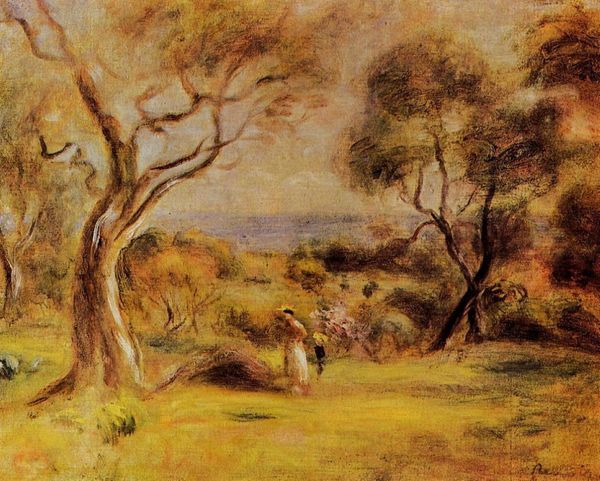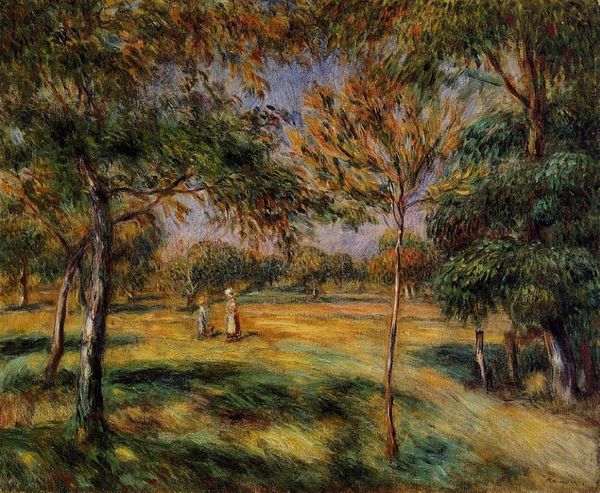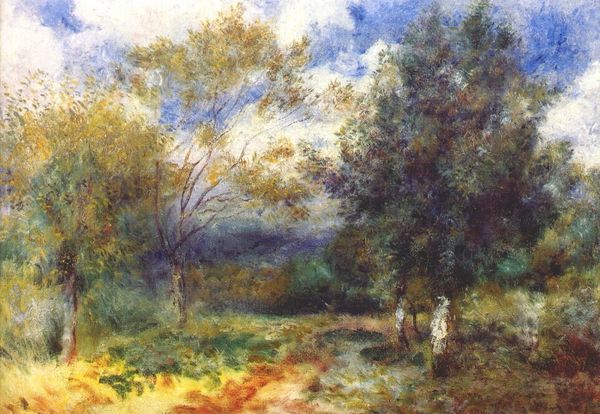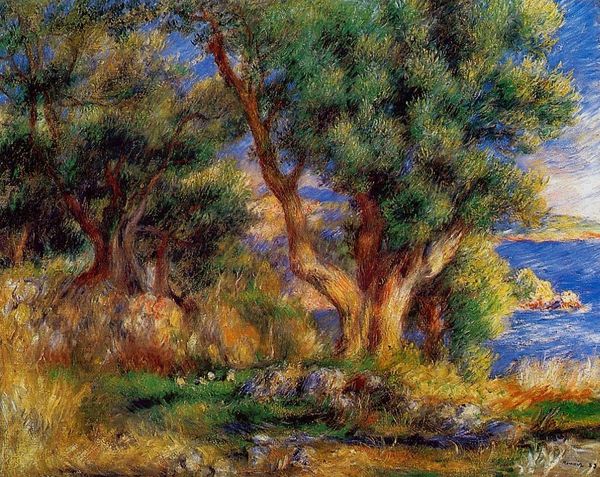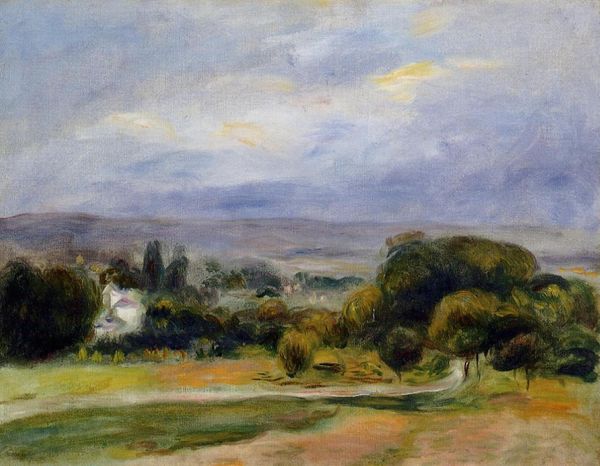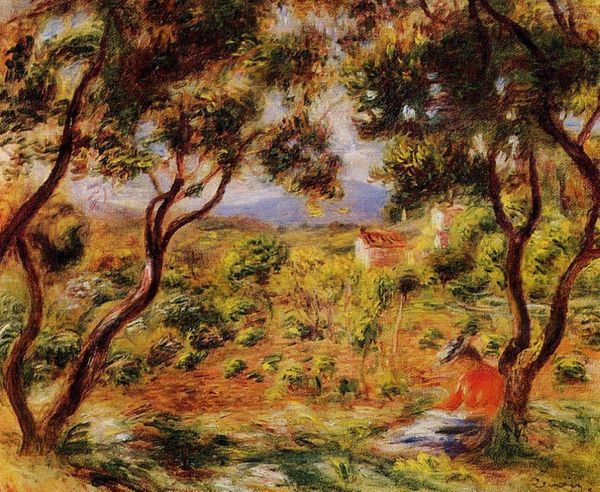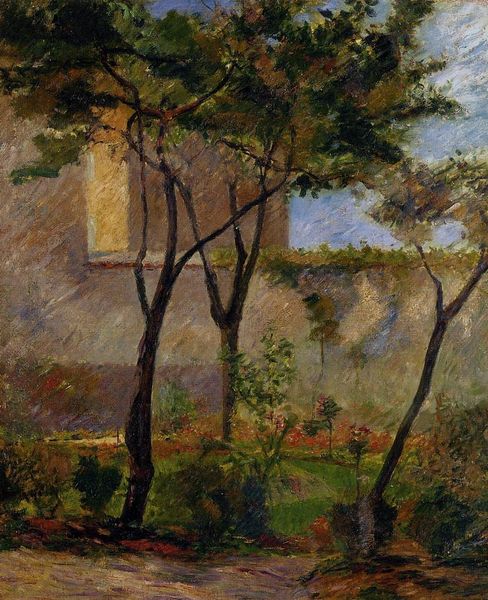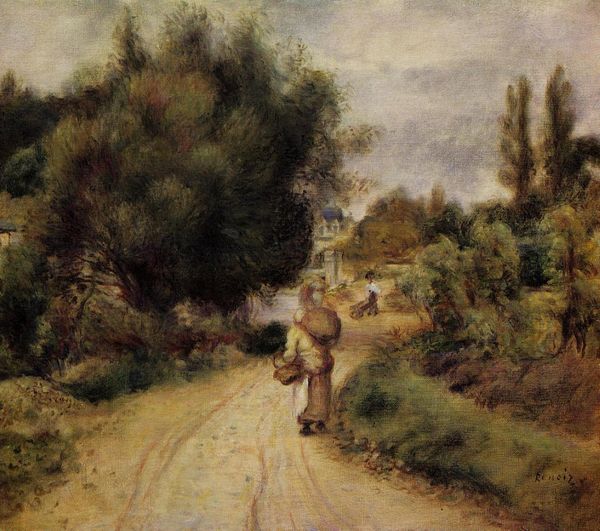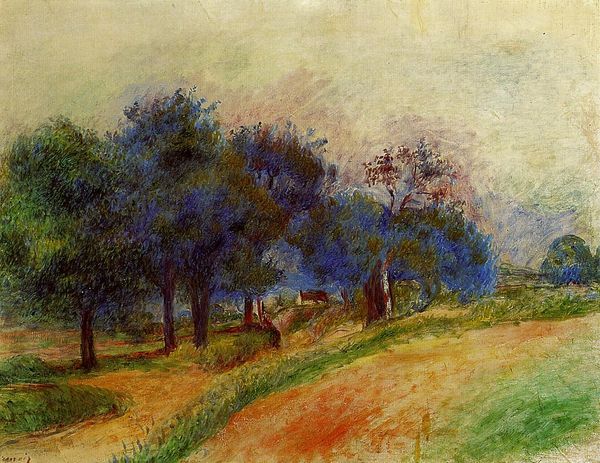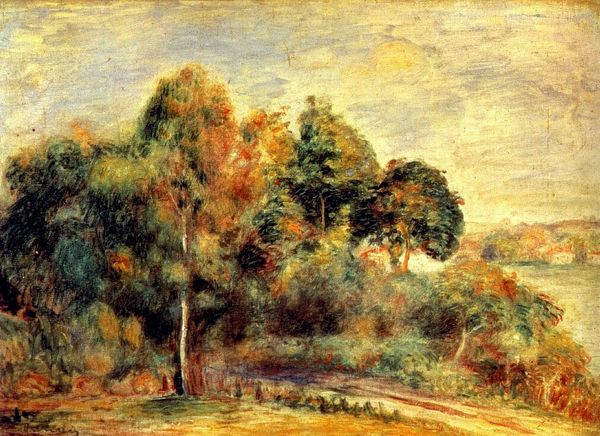
Copyright: Public domain
Pierre-Auguste Renoir’s, Cagnes Landscape is an oil on canvas that captures the idyllic countryside. The gnarled tree, reaching across the canvas, serves as a framing device, with a complex symbol embedded in its branches. The tree, a common motif throughout art history, often signifies life, growth, and interconnectedness. From the Tree of Knowledge in biblical narratives to the trees in classical landscapes, they frequently symbolize humanity's relationship with nature. However, the gnarled, almost tortured form of the tree in Renoir’s painting deviates from a purely celebratory view. This tree, with its twisting branches, may also reflect the struggles and complexities of existence, connecting it to van Gogh’s tormented cypresses, as he used these dark spires to express deep emotional states. These images tap into our collective unconscious. They remind us that while the world may seem harmonious, there are underlying emotional and psychological tensions. The tree's symbolism is thus both comforting and unsettling, engaging the viewer on a deep, subconscious level. Ultimately, the tree in Renoir’s landscape is not just an element of scenery but a powerful, recurring symbol that echoes across time, illustrating how enduring visual motifs evolve and take on new layers of meaning with each cultural reinterpretation.
Comments
No comments
Be the first to comment and join the conversation on the ultimate creative platform.
